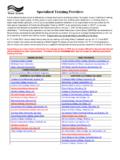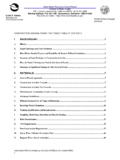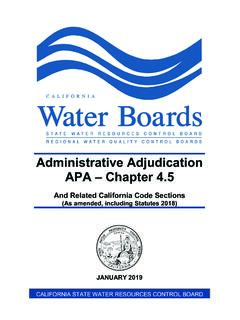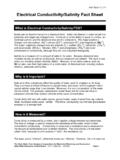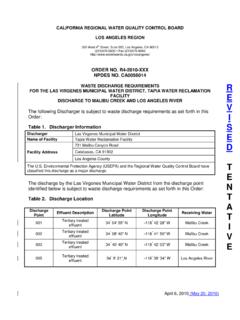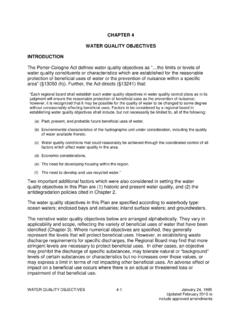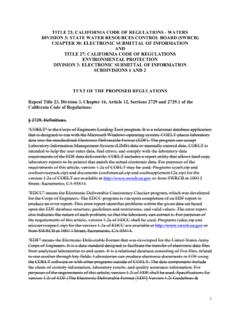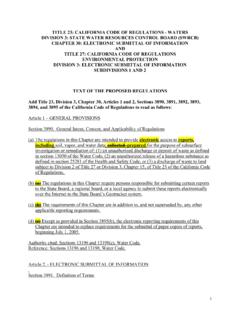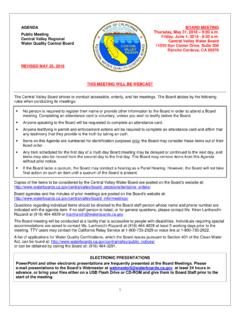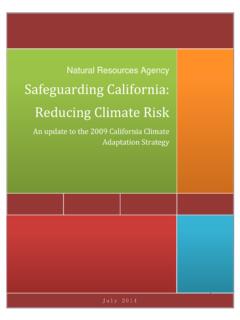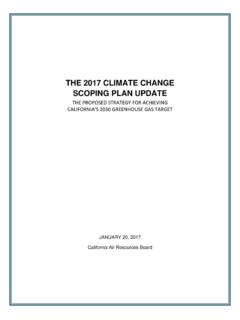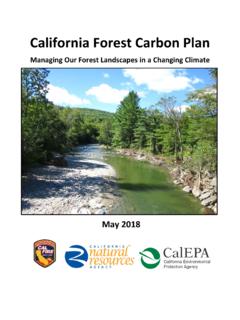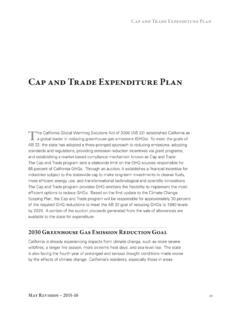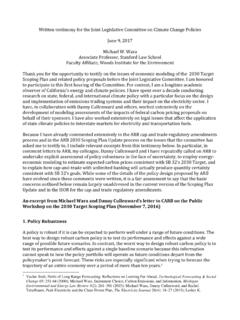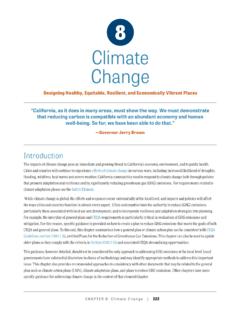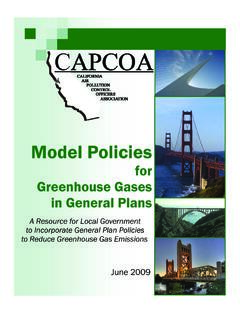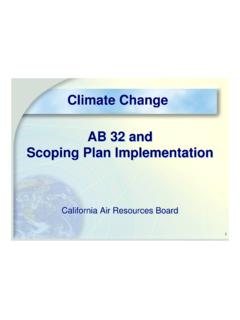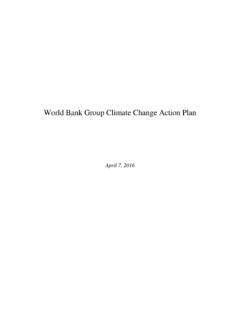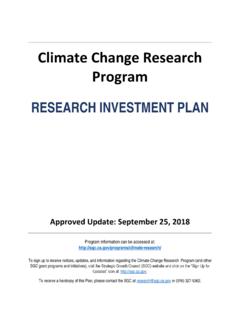Transcription of AGENDA CLIMATE CHANGE SCOPING PLAN …
1 AGENDA CLIMATE CHANGE SCOPING plan IMPLEMENTATION WORKSHOP MEASURE W-2: WATER RECYCLING 9:30 9:40 .. Introductions 9:40 9:50 .. Overview of AB 32 and SCOPING plan adopted December 11, 2008 Goal of AB 32 and Purpose of SCOPING plan Emission Reduction Goals Overview of CLIMATE Action Team (CAT) and Subteams Composition of CAT Water-Energy Team (WETCAT) 9:50 10:00 .. Discussion of SCOPING plan Measure W-2: Water Recycling Description of Measure Emission Reduction Calculations 10:00 11:30 .. Presentations of existing municipal wastewater recycling projects West Basin Municipal Water District Sonoma County Water Agency Los Angeles Community Services Districts Inland Empire Utility Agency 11:30 12:00 .. Financial Assistance 12:00 1:00 ..Lunch (Financing information will be available in the lobby 12:00p - 2:30p) 1:00.
2 Small Group Breakout Session 1 Topic: Development of Water recycling Plans 2:15 .. Break 2:30 .. Small Group Breakout Session 2 Topic: Implementation of Water Recycling Plans 3:45 4:00 .. Wrap-up and Closing Background information on reverse The subject of this workshop is the water recycling measure identified as W-2: Water Recycling in the California Air Resources Board report: CLIMATE CHANGE , Proposed SCOPING plan , a framework for CHANGE . Prepared pursuant to AB 32, The California Global Warming Solutions Act of 2006. Adopted January 2009. The following excerpt from the SCOPING plan is provided for participant context during the workshop. (Refer to back side of page) Measure W-2: Water Recycling GHG emission reductions can be achieved when one water supply source is used as an alternative to another, more energy intensive source. Water recycling can reduce energy use and thereby reduce GHG emissions by increasing local water supplies rather than importing water from other regions or reliance on other energy intensive treatment processes.
3 This measure proposes a requirement for development and implementation of water recycling plans by wastewater management agencies working with water supply agencies. This requirement would apply where the recycling of treated effluent is not maximized at wastewater treatment plants located in areas of imported water supply and where water recycling could require less energy than current water sources. Implementation of water recycling plans would be prioritized for those plants that discharge to water bodies from which the wastewater cannot otherwise be easily recovered, such as the ocean and brackish water bodies. Modern municipal wastewater treatment facilities are capable of producing high quality recycled water that is suitable for a wide range of beneficial uses. The DWR publication Water Recycling 2030: Recommendations of California s Recycled Water Task Force reports that approximately ten percent of municipal wastewater in California is being recycled, but as much as 23 percent of the municipal wastewater flow could be recycled.
4 This measure targets the 23 percent recycling goal by 2030. Finding suitable markets and funding treatment and distribution system costs are challenges to increasing the use of recycled water. The recommended public goods charge could be used to address this market barrier and provide funding for treatment and distribution systems. Substantial energy savings could be realized if recycled wastewater was used to replace potable water in appropriate applications such as irrigation. The amount of energy required to import or recycle water varies widely throughout the State. The CEC has reported that water supply and conveyance of water from northern to southern California consumes an estimated MWh per acre foot (AF). In contrast, the estimated energy needed to recycle wastewater is approximately MWh per AF, but this value will vary with the level of treatment required.
5 As a result, the potential energy savings that could be realized through water recycling is estimated as MWh per AF in southern California communities that import water.
